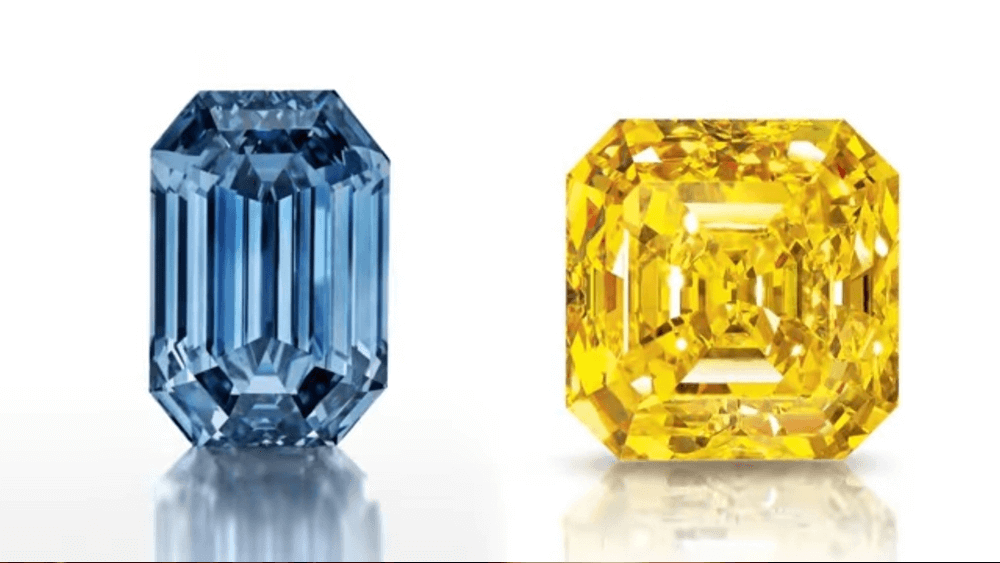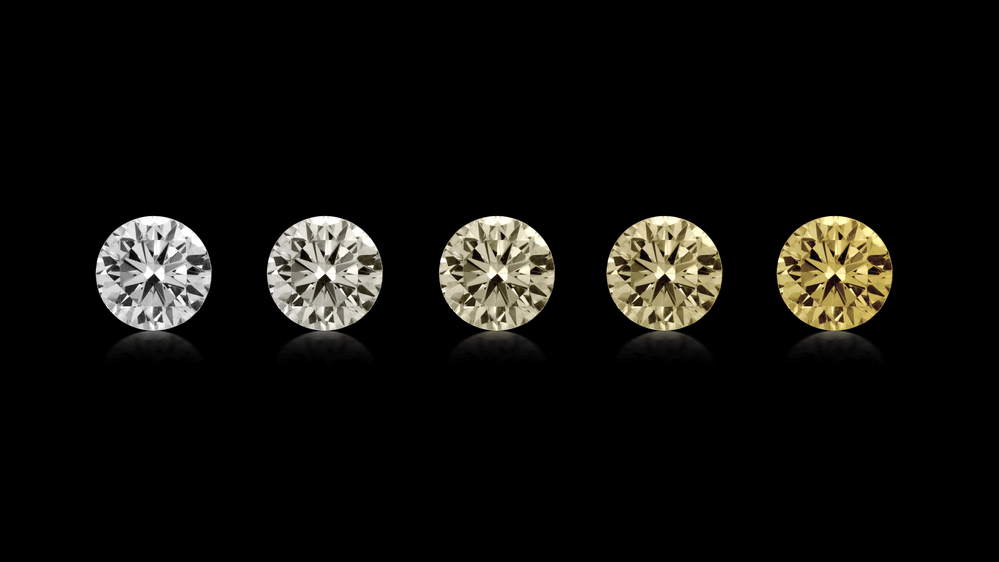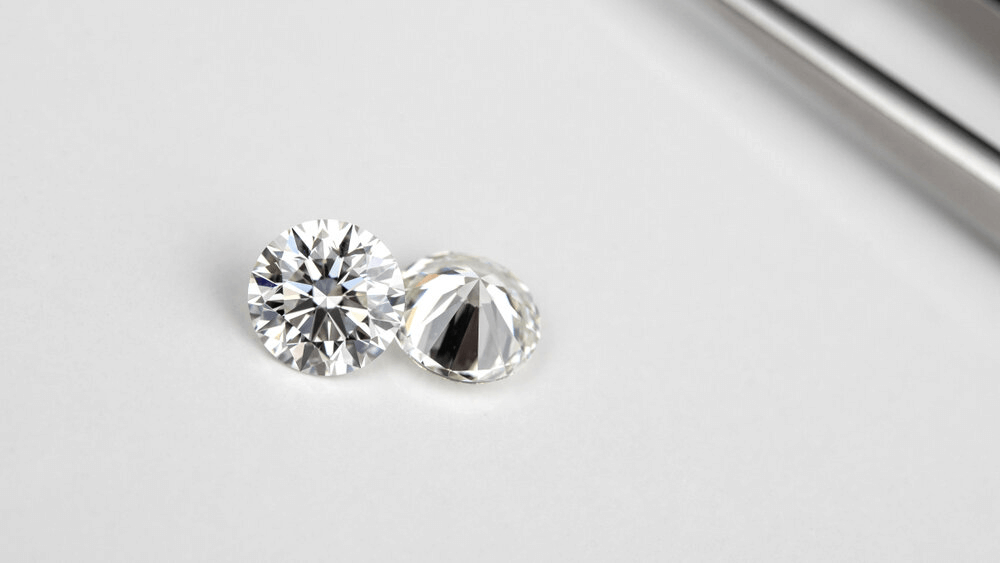Choosing G Color Diamonds: A Complete Guide

By Gary A.

Edited by Olivia H.
Published Sep 2, 2021
Edited on Dec 17, 2024
Striking the perfect balance between brilliance and budget, a G Color Diamond offers that near-colorless beauty many are after without breaking the bank – but is it the right choice for you?

- 7 Quick Tips for Evaluating G Color Diamonds in Engagement Rings
- Introduction
- The Basics of a G-Color Diamond
- G Diamond – Balancing Quality and Budget
- G-Color vs Clarity
- G-Color and Diamond Pricing
- Choosing the Right G Color Diamond
- Our Expert Take
- 7 FAQs
Before we dive deeper into the specifics, here are some practical tips to help guide your decision-making process:
7 Quick Tips for Evaluating G Color Diamonds in Engagement Rings
- Tip 1: Understand the Color Grading Scale: Familiarize yourself with the GIA color grading scale, especially where G-color diamonds fit in. Knowing the subtle differences between G and neighboring grades (F, H) will help you make an informed choice.
- Tip 2: Examine the Diamond in Various Lighting Conditions: Observe the diamond under different lighting sources. G-color diamonds should appear white or nearly colorless in most lighting, but subtle variations may be noticeable. Natural daylight and standardized indoor lighting are ideal for inspection.
- Tip 3: Compare with Other Color Grades: If possible, compare the G-color diamond side-by-side with diamonds of other color grades. This comparison can reveal the subtle color nuances and help you appreciate the unique qualities of the G-color grade. When comparing put the diamond on its table for a side view and use a white background.
- Tip 4: Pay Attention to the Diamond’s Cut: The cut of a diamond influences its color perception. A well-cut G-color diamond can appear more brilliant and mask slight color tones. Prioritize excellent or ideal cut diamonds to enhance the stone’s overall appearance.
- Tip 5: Consider the Setting Metal: The choice of metal for your engagement ring setting can impact how the diamond’s color is perceived. G-color diamonds pair well with both white and yellow gold, but the contrast with white gold or platinum can make the diamond appear brighter.
- Tip 6: Assess the Diamond’s Size: Larger diamonds can show more color, so be extra diligent when examining bigger G-color diamonds. In larger sizes, any subtle color present may become slightly more noticeable.
- Tip 7: Check for Fluorescence: Diamonds with fluorescence can appear different under ultraviolet light. For G-color diamonds, faint or medium fluorescence can sometimes enhance the appearance, making the diamond look whiter. However, strong fluorescence might create a hazy or oily look, so be cautious.
Now that you’ve got these practical tips, use Jeweler AI below to find the perfect engagement ring that suits your style and budget:
Introduction
Diamond color is one of those topics that can easily confuse shoppers who are new to the four Cs as unless you’re specifically looking for a fancy colored diamond in blue or pink, it doesn’t sound like it should affect you all that much.
Very quickly, however, we all come to realize that color is just as significant as any of the rest of the four Cs and that a poor choice of color grade can significantly impact the appearance of your diamond, and the finished engagement ring.
Like inclusions, color is seen as a negative feature within any clear diamond. It can present as a very light, watered-down yellow, or as a definite brown-cast within the stone. And, while this is entirely natural – and a fascinating part of a diamond’s billion-year history – it’s not what the majority of shoppers are looking to place on the finger of their bride-to-be.
The Basics of a G Color Diamond
G-Color Diamonds sit a few grades from the top, but close enough that many shoppers are drawn to them for their lower cost. But, are they the best choice for you?
Sure, we could jump straight to telling you that a G-Color diamond is a great place to set your sights on if you’re looking for a beautiful diamond, but, as you’ve probably realised by now, it’s much, much better to understand the basics before you jump to any conclusion. There’s no definitive ‘right’ or ‘wrong’ way – but this is a great place to start.
Definition and Characteristics of G Color Diamonds
A G-Color Diamond is considered ‘Near Colorless’, and close enough to colorless that you are not going to be able to see the discoloration under usual lighting, even though it’s there.
The color grade system begins at D and, from there, decreases all the way down to Z. These grades are divided into categories ranging from colorless (D to F Color Diamonds) all the way to Light Yellow (S to Z Color Diamonds).
Being the fourth grade from the top, G-Color Diamonds represent the highest grade in the category known as ‘Near Colorless’, which ends with grade J. This particular category is considered a great focus point for shoppers looking to make a wise investment in their diamond’s quality and appearance, since these diamonds are considerably more affordable and, at the same time, negligibly different in appearance.
For instance, only an expert gemologist, using the right lighting and magnification, would be able to detect the difference between this 1.2 Carat G-Color VS1 Oval Diamond, and this 1.2 Carat F Color VS1 Oval Diamond. The only way you would be able to tell the difference (unless you read the diamond’s GIA report) would be via the diamonds’ different price tags.
G Color Diamond Appearance
Do G-Color Diamonds Look Yellow? Technically, Yes, but only if you’re looking at them under ideal light conditions. Even then, the yellow tint will be incredibly minor, and not enough to have a negative impact on the diamond during wear.
When a diamond’s GIA Report is created, it is scrutinized heavily under lab conditions, and by someone who has trained for many, many years to be able to detect the subtle nuances that exist between two seemingly identical diamonds.
In order for a diamond to be graded anywhere below a D Color, it has to contain some yellow – but you have to go pretty far down the scale before you’ll be able to detect it under normal lighting, and with your naked eye.
In other words, minor discrepancies in color are perfectly fine. They won’t interrupt the natural beauty of diamonds, nor will they look off-color – for that, you’d have to be looking at diamonds a few grades lower on the color scale (around K and below).
G Diamond – Balancing Quality and Budget
Making your diamond fit with your budget is the biggest challenge you will face during your time engagement ring shopping, but a G-Color Diamond is a great place to start. The difference between Near Colorless diamonds and Colorless diamonds is pretty significant, after all.
When it comes to working out where to focus the lion’s share of your money, the question often boils down to diamond color vs clarity – or, more specifically, which of these two Cs deserves more attention and investment when it comes time to buy.
And, while it’s important you pick a diamond that doesn’t show any visible signs of yellowing, the difference between Colorless and Near Colorless is far too minor to have a negative impact on the visual appeal of the diamond.
So, yes, a G-Color diamond is probably one of the top grades to pick if you’re looking to make a good investment without blowing the bank on the highest possible grades.
More Bang for Your Buck: F vs G Color Diamonds
F falls into the top category known as ‘colorless’, and is one grade higher than G. To the naked eye, however, it’s unlikely many of us would be able to confidently say that an F color diamond is better than a G-color diamond.
It’s one thing for a diamond’s GIA report to document its precise color grade, but it’s another thing entirely for the diamond to look noticeably different to another. You’d have to be looking at two diamonds with a much more significant color grade difference in order to detect any meaningful change in coloration.
So, in essence, while an F Color Diamond is objectively better than a G-Color Diamond, there’s so little difference between the two that, for the average shopper, that minor improvement in terms of color is simply not worth the higher cost.
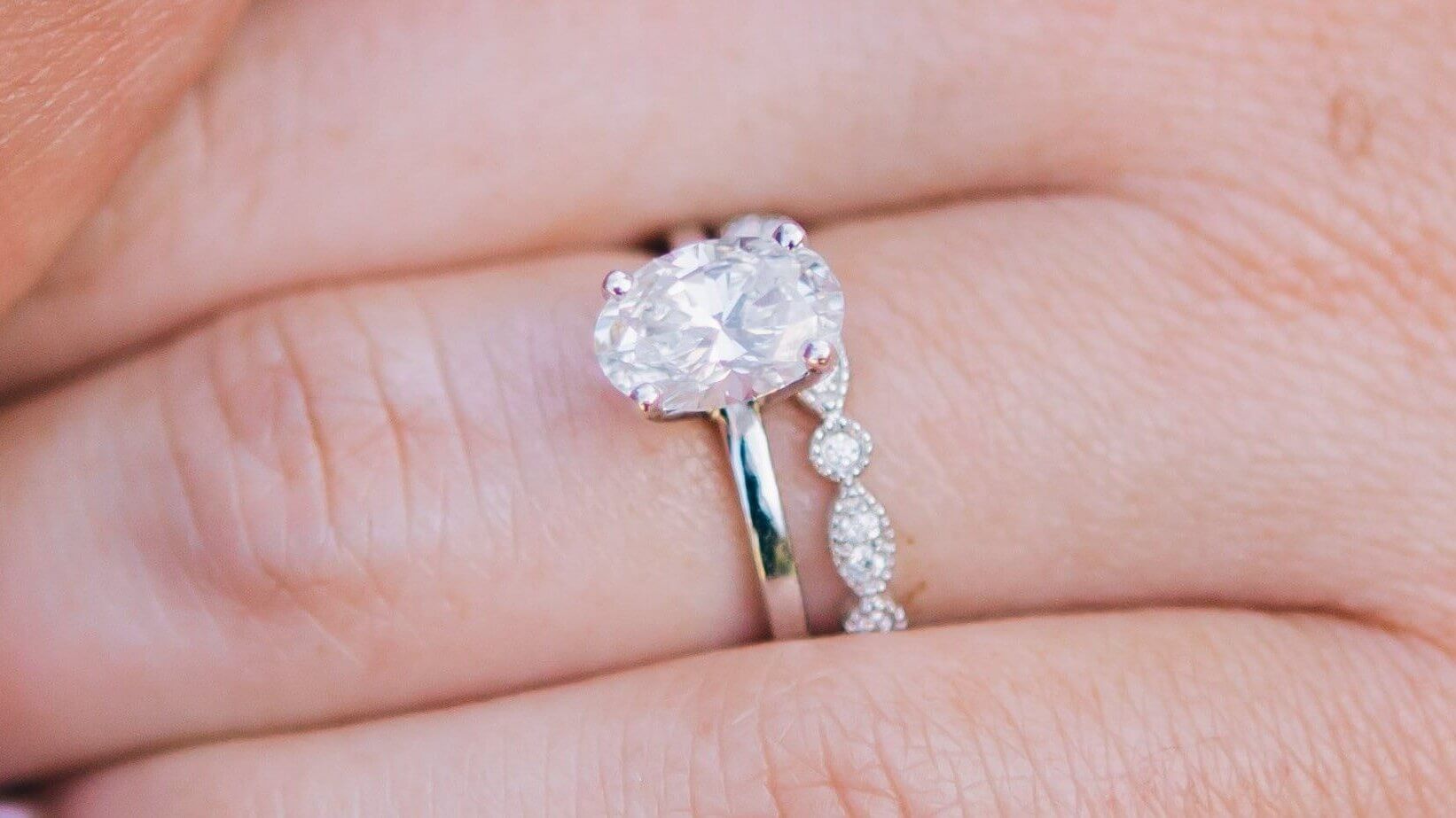
G Color vs Clarity
As always, color and clarity are two features that need to be considered very carefully during the process of hunting for the right diamond. Avoiding the two most significant flaws a diamond can suffer from – discoloration and inclusions – is very important for making a good choice, but that’s not to say it’s always easy.
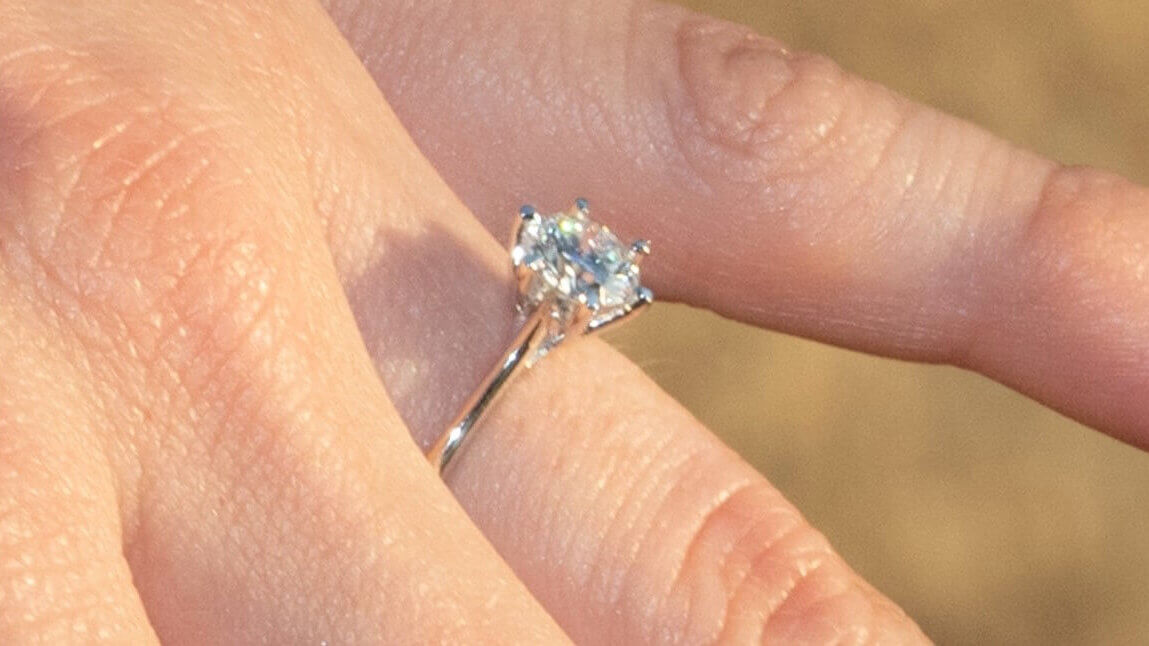
Is G SI1 a Good Diamond?
While a G-Color diamond is definitely where you want to be in terms of color, the flaws found in SI1 diamonds can be significant enough to impact the appearance of the diamond if it is more than 2.0 carats in weight.
When it comes to the debate over SI1 vs VS2, the higher clarity of VS2 will inevitably win out over SI1 if you’re looking to get the best quality possible. Narrowing your sights on a clarity grade of VS2 means you’ll find it much easier to track down an eye clean diamond, whereas SI1 will feature visible inclusions – although they will be pretty minor. For many, however, sacrificing eye cleanliness is not an option.
Yes, you might have to sacrifice some carat weight to find an affordable G-VS2 Diamond but, in doing so, you can feel much more confident that the overall quality and visual impact of the diamond will be stronger.
SI1 is, however, a good choice if you’re more committed to getting the largest diamond possible. If this is the case for you, then you’ll definitely want to opt for a very good color grade, such as G, in order to ensure that the larger carat weight of the diamond does not draw more attention to any discoloration – particularly if your diamond features a Cushion or Emerald cut, as these can display yellow more vividly. For instance, we’re willing to bet that you can’t detect any yellowing in this 3 Carat G-SI1 Cushion Diamond.
This is why it’s so important to take your time with it. Striking the ideal balance between color and clarity is not going to be fast, but it’s always worth taking that time and making sure the diamond is right for you.
G Color and Diamond Pricing
It’s all well and good telling you that G-Color Diamonds look beautiful, but, as with any aspect of diamond buying, it’s also got to be a realistic goal in terms of your budget. So, appearances aside, here’s what you need to know about the relationship with G-Color Diamonds, and wise investments.
G Color Diamonds vs D Color Diamonds
A D Color diamond will likely cost hundreds of dollars more than a G-Color Diamond of otherwise comparable quality.
Each of the color grades commands its own price, with D being by far the most expensive. Since they belong to the ‘Near Colorless’ category, G-Color Diamonds will cost significantly less than D, E and F Diamonds, while still garnering a premium price for their proximity to those top grades.
Of course, G-Color diamonds aren’t going to be thousands of dollars cheaper, since jewelers are aware that many shoppers will lean toward this grade, rather than the very highest grades possible. Even so, you’ll be able to find a competitively priced G-Color Diamond, without overpaying for quality you won’t notice.
G Color Diamonds as an Investment
Diamonds rarely make for an ideal investment, unless you’re investing in beauty and sentimental value rather than financial value. Second-hand diamonds typically sell for less than what you pay for them at the jewelry store, with only the rarest and most culturally valued diamonds gaining wealth over the years. G-color diamonds are not particularly rare (at least, compared with D color diamonds), so avoid them if you’re looking to grow wealth through diamonds.
But, if you’re in the market for a diamond ring – or any other piece of diamond jewelry – then G-Color diamonds represent the ideal sweet spot if you want to find that quality without paying over the odds – something the overwhelming majority of diamond shoppers are looking to achieve.
Choosing the Right G Color Diamond
Many experienced jewelers often consider G-Color diamonds to represent an ideal middle ground between total colorlessness, and affordability. That way, you can channel more of your budget toward positive attributes, such as size and cut.
It goes without saying that a Color Grade of D will drive up the price more than any other color grade and that two diamonds of otherwise comparable quality will be priced totally differently if one has been graded D Color and the other, say, J or K.
As a result, a G-Color diamond, while cheaper than D, E or F Color Diamonds, will also be noticeably more expensive than any diamonds that fall below it on the color scale (provided they’re of similar quality in terms of cut, color, and clarity).
Still, it will also be significantly cheaper than one of the colorless grades (D, E, or F), which means that shoppers can strike a pretty advantageous balance between the premium cost of a diamond that has been graded at the very top of the scale, and the lower cost of diamonds that bear a more discernible yellow tint.
When it comes to the four Cs, many first-time buyers are reluctant to sacrifice the very highest grades, since they offer objective confirmation that a diamond is ‘good’. Still, this is a big mistake, since it’ll probably force you into a corner and mean that you have to settle for a much smaller diamond in order to stay true to your budget.
You can, however, go too far in the right direction. Just as we recommend a diamond with a clarity grade of VS over a smaller diamond with a VVS clarity grade, we would always recommend aiming a little lower than ‘Colorless’, as doing so will free up more money for the more noticeable aspects of a diamond’s quality: cut and carat weight.
Our Expert Take
A grade of G is an excellent choice as far as the stone’s color is concerned. Just don’t forget about the significance of good clarity, cut and carat weight, too.
Yes, it will always, always be tempting to push your limits and go for a color grade of D – or, at the very least, one that falls into the top category of Colorless diamonds. There is nothing inherently wrong with this, and we can all understand why so many still feel the draw of objective perfection.
Still, very few of us can really afford to take a ‘go big or go home’ approach to buying a diamond engagement ring, and certain concessions have to be made in order to ensure it’s the best ring for you and your partner.
A color grade of G is one of those ideal concessions, since, as far as you are concerned (or anyone else who is not an experienced and discerning gemologist) the difference between that and a D Color Diamond exists in name only.
7 FAQs
- Q: What is a G-Color Diamond?
- A: A G-color diamond is classified as “near colorless” on the GIA diamond color scale. It’s the highest grade in the near colorless range, offering a balance of beauty and value.
- Q: How does a G-Color Diamond compare to a D Color Diamond?
- A: A D color diamond is colorless, the highest color grade, while G is near colorless. To the untrained eye, the difference is minimal, but D color diamonds are generally more expensive.
- Q: Is a G-Color Diamond Good for an Engagement Ring?
- A: Absolutely. G-color diamonds offer a white appearance, making them an excellent and budget-friendly choice for engagement rings.
- Q: Can You See Yellow in a G-Color Diamond?
- A: Under normal circumstances, any yellow tinge in a G-color diamond is imperceptible to the untrained eye, especially once set in jewelry.
- Q: What Clarity Grade is Best for a G-Color Diamond?
- A: VS1 or VS2 clarity grades are often recommended for G-color diamonds, balancing cost and visible quality effectively.
- Q: Does the Setting Affect the Appearance of a G-Color Diamond?
- A: Yes, the setting can influence the perceived color. G-color diamonds can appear whiter in white gold or platinum settings and blend well with yellow or rose gold.
- Q: Are G-Color Diamonds a Good Investment?
- A: G-color diamonds are a smart investment for their balance of quality and price. They hold their value well and are highly sought after in the market.
Transform your ring journey with Jeweler AI – uncover the perfect G color diamond effortlessly
FOLLOW-UP GUIDE SERIES

